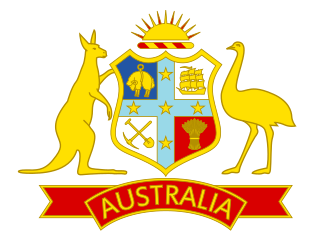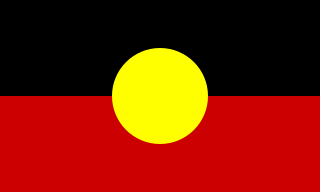
Adelaide is the capital and most populous city of South Australia, as well as the fifth and sixth most populous cities in Australia and Oceania, respectively. The name "Adelaide" may refer to either Greater Adelaide or the Adelaide city centre. The demonym Adelaidean is used to denote the city and the residents of Adelaide. The traditional owners of the Adelaide region are the Kaurna. The area of the city centre and surrounding Park Lands is called Tarndanya in the Kaurna language.

Oceania is a geographical region including Australasia, Melanesia, Micronesia, and Polynesia. Outside of the English-speaking world, Oceania is generally considered a continent, while Mainland Australia is regarded as its continental landmass. Spanning the Eastern and Western hemispheres, at the centre of the water hemisphere, Oceania is estimated to have a land area of about 9,000,000 square kilometres (3,500,000 sq mi) and a population of around 44.4 million as of 2022. Oceania is the smallest continent in land area and the second-least populated after Antarctica.

Perth is the capital city of Western Australia. It is the fourth most populous city in Australia, with a population of over 2.3 million within Greater Perth as of 2023. It is part of the South West Land Division of Western Australia, with most of Perth's metropolitan area on the Swan Coastal Plain between the Indian Ocean and the Darling Scarp. The city has expanded outward from the original British settlements on the Swan River, upon which its central business district and port of Fremantle are situated.

Sydney is the capital city of the state of New South Wales and the most populous city in Australia. Located on Australia's east coast, the metropolis surrounds Sydney Harbour and extends about 80 km (50 mi) from the Pacific Ocean in the east to the Blue Mountains in the west, and about 80 km (50 mi) from the Ku-ring-gai Chase National Park and the Hawkesbury River in the north and north-west, to the Royal National Park and Macarthur in the south and south-west. Greater Sydney consists of 658 suburbs, spread across 33 local government areas. Residents of the city are colloquially known as "Sydneysiders". The estimated population in June 2023 was 5,450,496, which is about 66% of the state's population. The city's nicknames include the Emerald City and the Harbour City.

Western Australia (WA) is the westernmost state of Australia. It is bounded by the Indian Ocean to the north and west, the Southern Ocean to the south, the Northern Territory to the north-east, and South Australia to the south-east. Western Australia is Australia’s largest state, with a land area of 2,527,013 square kilometres (975,685 sq mi), and is also the second-largest subdivision of any country on Earth, surpassed only by the Sakha Republic in eastern Russia, and formerly Northwest Territories in Canada, before the creation of Nunavut. It is also the largest proper subnational entity, being a state rather than a territory or an autonomous region.

The Australia national cricket team represents Australia in men's international cricket. Along with England, it is the joint oldest team in Test cricket history, playing in the first ever Test match in 1877; the team also plays One-Day International (ODI) and Twenty20 International (T20I) cricket, participating in both the first ODI, against England in the 1970–71 season and the first T20I, against New Zealand in the 2004–05 season, winning both games. The team draws its players from teams playing in the Australian domestic competitions – the Sheffield Shield, the Australian domestic limited-overs cricket tournament and the Big Bash League. Australia are the current ICC World Test Championship and ICC Cricket World Cup champions. They are regarded as the most successful cricket team in the history of cricket.

Aboriginal Australians are the various Indigenous peoples of the Australian mainland and many of its islands, excluding the ethnically distinct people of the Torres Strait Islands.

The states and territories are the second level of government of Australia. The states are partially sovereign, administrative divisions that are self-governing polities, having ceded some sovereign rights to the federal government. They have their own constitutions, legislatures, executive governments, judiciaries and law enforcement agencies that administer and deliver public policies and programs. Territories can be autonomous and administer local policies and programs much like the states in practice, but are still legally subordinate to the federal government.

Australia, officially the Commonwealth of Australia, is a country comprising the mainland of the Australian continent, the island of Tasmania and numerous smaller islands. Australia has a total area of 7,688,287 km2 (2,968,464 sq mi), making it the sixth-largest country in the world and the largest country by area in Oceania. It is the world's oldest, flattest, and driest inhabited continent, with some of the least fertile soils. It is a megadiverse country, and its size gives it a wide variety of landscapes and climates including deserts in the interior and tropical rainforests along the coast.

Hypocystina is a subtribe of butterflies.

Melbourne is the capital and most populous city of the Australian state of Victoria, and the second-most populous city in Australia, after Sydney. Its name generally refers to a 9,993 km2 (3,858 sq mi) metropolitan area also known as Greater Melbourne, comprising an urban agglomeration of 31 local government areas. The name is also used to specifically refer to the local government area named City of Melbourne, whose area is centred on the Melbourne central business district and some immediate surrounds.

Hypocysta is a genus of butterflies in the family Nymphalidae found in Oceania.

Hypocysta metirius, the common brown ringlet, is a species of butterfly of the family Nymphalidae. It is found along the east coast of Australia, including Queensland, New South Wales and Victoria.

Hypocysta pseudirius, the dingy ringlet or grey ringlet, is a species of butterfly of the family Nymphalidae. It is found in Australia, including Queensland and New South Wales. The wingspan is about 30 mm.

Hypocysta irius, the northern ringlet or orange-streaked ringlet, is a species of butterfly of the family Nymphalidae. It is found in Australia, including Queensland and New South Wales.

Hypocysta angustata, the black and white ringlet or pied ringlet, is a species of butterfly of the family Nymphalidae. It is found on the Cape York Peninsula in Australia and in the rainforests of New Guinea.

Hypocysta adiante, the orange ringlet, is a species of butterfly of the family Nymphalidae. It is found in Australia, including Queensland, New South Wales, the Northern Territory and the north of Western Australia.

Hypocysta aroa is a species of butterfly of the family Nymphalidae. It is found in New Guinea.

















